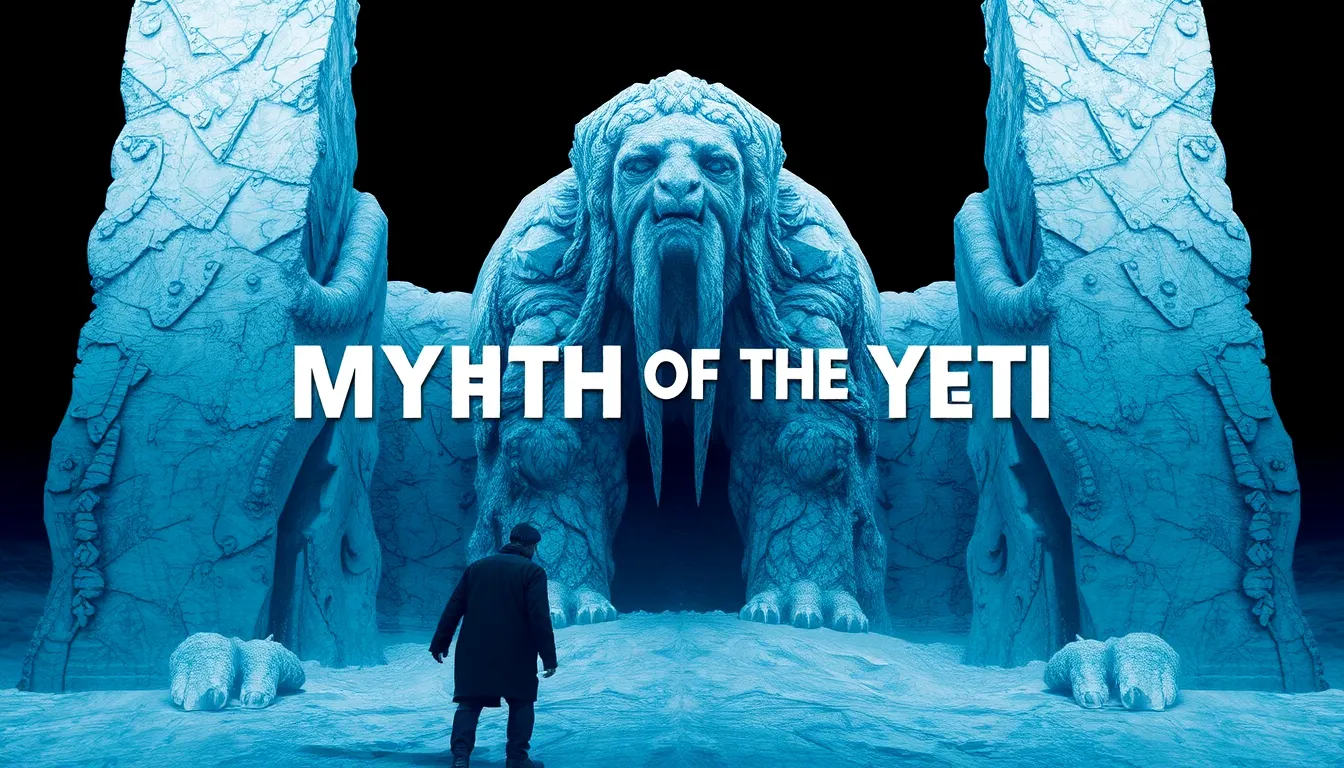The Myth of the Yeti: Uncovering the Truth Behind the Legend
I. Introduction to the Yeti Myth
The term “Yeti” refers to a cryptid said to inhabit the Himalayan mountains. Often described as an ape-like creature, the Yeti has intrigued adventurers and researchers alike for centuries. The word itself is derived from the Tibetan word “yeh-teh,” which means “rocky place.” In Himalayan folklore, the Yeti is often depicted as a mysterious being, part man and part beast, that roams the snow-covered peaks.
This article aims to explore the truth behind the Yeti legend, delving into its historical roots, cultural significance, and the scientific investigations that seek to uncover its reality.
II. Historical Context of the Yeti Legend
Early references to the Yeti can be found in ancient texts and local folklore. Tales of a large, hairy creature living in the mountains have been passed down through generations, with the first recorded sightings dating back to the 19th century.
The Yeti fits into a larger context of mythical creatures found in world cultures, such as Bigfoot in North America and the Sasquatch in Canada. These creatures often represent humanity’s fascination with the unknown and the unexplored regions of the earth.
During the British colonial period in the Himalayas, expeditions by Western explorers popularized the Yeti narrative. Accounts from these expeditions contributed to a growing mythos surrounding the creature, blending local folklore with the imaginations of Western adventurers.
III. The Yeti’s Evolution in Popular Culture
As stories of the Yeti spread, it evolved into a global phenomenon. The creature became a staple in popular culture, appearing in various forms of media, including:
- Films, such as “The Abominable Snowman” and “Snow Beast.”
- Literature, including children’s books and horror stories.
- Television shows, often portraying the Yeti as a fearsome yet fascinating creature.
Tourism in the Himalayan region has also been significantly impacted by the Yeti legend. Many adventurers and tourists visit Nepal and Tibet, hoping to catch a glimpse of the elusive creature or explore locations associated with Yeti sightings. This influx of tourists has contributed to local economies, fostering a unique blend of adventure and folklore.
IV. Scientific Investigations and Expeditions
Over the years, numerous expeditions have sought to find evidence of the Yeti’s existence. Some of the most notable ones include:
- The 1951 expedition led by Eric Shipton, who captured a photograph of what appeared to be Yeti footprints.
- The 1970s expeditions organized by Sir Edmund Hillary, which included scientific investigations into the Yeti’s habitat.
- Recent DNA analysis efforts aimed at examining hair samples purported to belong to the Yeti.
Notable findings have included footprints, hair samples, and even purported sightings. However, despite these efforts, definitive evidence of the Yeti’s existence remains elusive.
Modern technology, including DNA sequencing and remote sensing, has played a crucial role in these investigations. Researchers have utilized these tools to analyze samples and gather data, striving to separate fact from folklore.
V. Eyewitness Accounts and Anecdotal Evidence
Anecdotal evidence plays a significant role in the Yeti legend, with numerous eyewitness accounts contributing to the mythology. Some famous sightings include:
- The 1951 account by Eric Shipton, who claimed to have seen large footprints in the snow.
- Reports from local Sherpas who describe encounters with the creature.
- Modern hikers and climbers who claim to have spotted the Yeti while trekking in the Himalayas.
While these accounts are compelling, the credibility of eyewitness testimonies can vary widely. Factors such as psychological predisposition, cultural beliefs, and environmental conditions can influence what individuals perceive. The Yeti often serves as a canvas onto which people project their fears and fascinations.
VI. Cryptozoology and the Yeti
Cryptozoology, the study of and search for animals whose existence is not substantiated by mainstream science, is closely associated with the Yeti. Key figures in this field have contributed to the ongoing fascination with the creature, including:
- Bernard Heuvelmans, often regarded as the father of cryptozoology.
- Lauren Coleman, who has written extensively on cryptids, including the Yeti.
The intersection of science and pseudoscience is evident in the study of the Yeti, as researchers grapple with the challenge of proving or disproving its existence. While some approaches are grounded in scientific inquiry, others lean more towards folklore and myth.
VII. The Role of Hoaxes and Misidentifications
Throughout history, several hoaxes have sought to capitalize on the Yeti legend, including:
- The 1950s “Yeti hand” hoax, which was later revealed to be a prosthetic.
- Various alleged Yeti footprints found to be from local wildlife.
Misidentifications of known animals, such as bears, and natural phenomena, such as wind patterns, have also contributed to the Yeti narrative. These hoaxes and misidentifications have shaped public perception, often leading to skepticism about the Yeti’s existence.
VIII. The Cultural Significance of the Yeti Legend
The Yeti symbolizes the unknown and unexplored, representing humanity’s enduring curiosity about the natural world. In local Himalayan communities, the Yeti holds cultural significance, embodying the region’s rich folklore and traditions.
Moreover, the Yeti’s presence in environmental conservation narratives highlights the importance of preserving the fragile ecosystems of the Himalayas. The legend serves as a reminder of the interconnectedness of nature and humanity.
IX. Contemporary Views on the Yeti
Current scientific consensus leans towards skepticism regarding the existence of the Yeti. While some believe that undiscovered species may still exist in remote areas, the evidence for the Yeti specifically remains inconclusive.
As climate change continues to impact the Himalayan region, the Yeti has also become a part of discussions surrounding environmental conservation. The legend encourages a deeper appreciation for the wilderness and the need to protect it from human encroachment.




